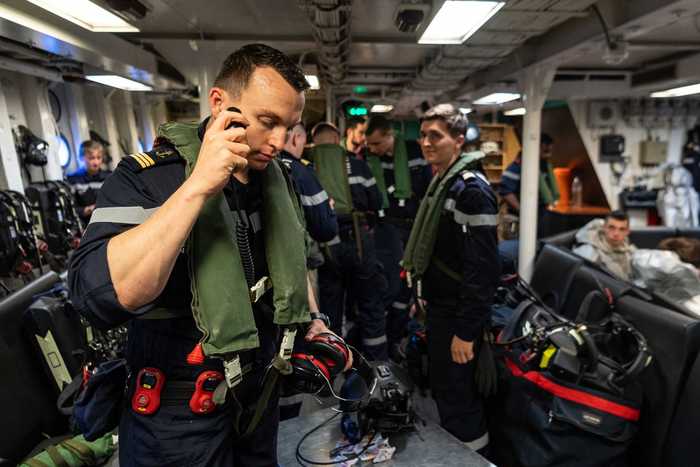Published 08:37 IST, May 19th 2024
The French Navy is set to revolutionize its underwater detection capabilities by incorporating AI to manage the increasingly noisy underwater environment.
Advertisement
Paris: The French Navy is advancing its technological capabilities by incorporating artificial intelligence (AI) to enhance the detection of enemy vessels in the increasingly noisy underwater environment. This initiative, led by the Navy’s Acoustic Recognition and Interpretation Center (CIRA) in Toulon, is in collaboration with the French startup Preligens, as announced by Vincent Magnan, the centre’s head, during a recent presentation.
France aims to test this AI technology onboard its submarines by the end of the year, with full operational deployment scheduled for 2025. The drive towards AI integration is part of a broader strategy to manage the exponential growth in data collected by the Navy’s advanced passive acoustic sensors.
Advertisement
Role of AI in Acoustic Analysis
The AI technology developed by Preligens will assist the Navy’s acoustics analysts, known as “golden ears,” by filtering out irrelevant noise and highlighting significant signals. This process will enable analysts to focus on high-value tasks, thus improving operational efficiency. The initial tests of the AI model have shown promising results, with the ability to distinguish between hobbyist boats and commercial vessels, identify propeller speeds and propulsion systems, and even determine the number of propeller blades.

The rise in the number and capability of passive acoustic sensors has led to a surge in data, necessitating innovative solutions for efficient analysis. According to Magnan, the data collected by CIRA has increased dramatically, from 1 terabyte in 2020 to approximately 10 terabytes in 2024, with projections reaching 100 terabytes or more by 2030.
Advertisement
“To analyze all this data and extract the crucial information for combat operations, we need technological innovations, including artificial intelligence,” Magnan emphasized.
Operational Integration and Future Prospects
The operational integration of AI is set to transform how data is processed and utilized both at CIRA and onboard submarines. Currently, sifting through 12 days of acoustic data recorded in the waters off Toulon requires over 40 working days from two analysts. With the AI demonstrator from Preligens, the same task can be completed in 4 to 5 hours, followed by an additional five to six days of human analysis.

“The gain is enormous,” Magnan noted, highlighting the potential for AI to streamline operations and enhance decision-making capabilities.
France’s third-generation ballistic missile submarines are expected to feature even greater sensor capabilities, further increasing the volume of data collected. This expansion necessitates the deployment of AI to manage and analyze the influx of acoustic information effectively. The future vision includes combining AI models with other data sources such as satellite imagery, radar, visual, and electromagnetic information.
Advertisement
AI Development and Deployment
The AI project at CIRA began in 2021, following discussions between Magnan and Preligens executives. The French military intelligence had already been using Preligens’ AI products for satellite imagery analysis, paving the way for similar applications in underwater acoustics.
Julian Le Deunf, an expert at the Armed Forces Ministry’s newly created AI in Defense agency, announced that a tool for automatic detection and identification of various acoustic sources would be demonstrated at the Viva Technology show in Paris next week.
Advertisement
“The promising results encourage us to test these capabilities in real-life conditions on submarines by the end of the year,” Le Deunf stated, underlining the goal to integrate the AI model directly behind an audio stream from a sensor.
05:53 IST, May 19th 2024